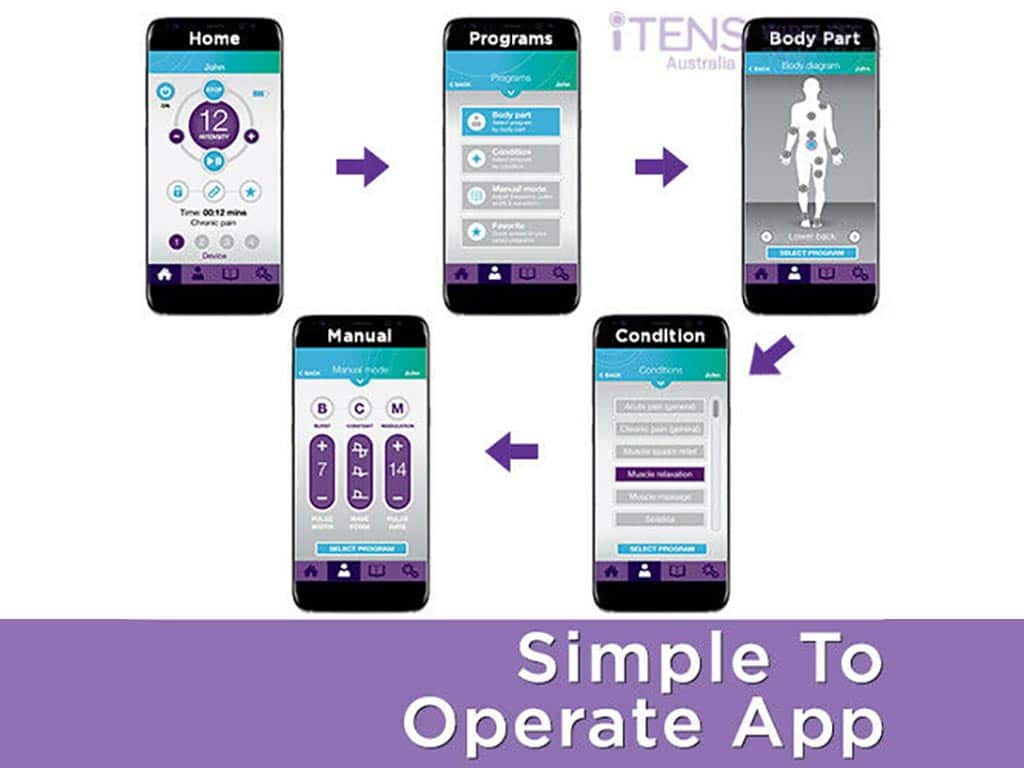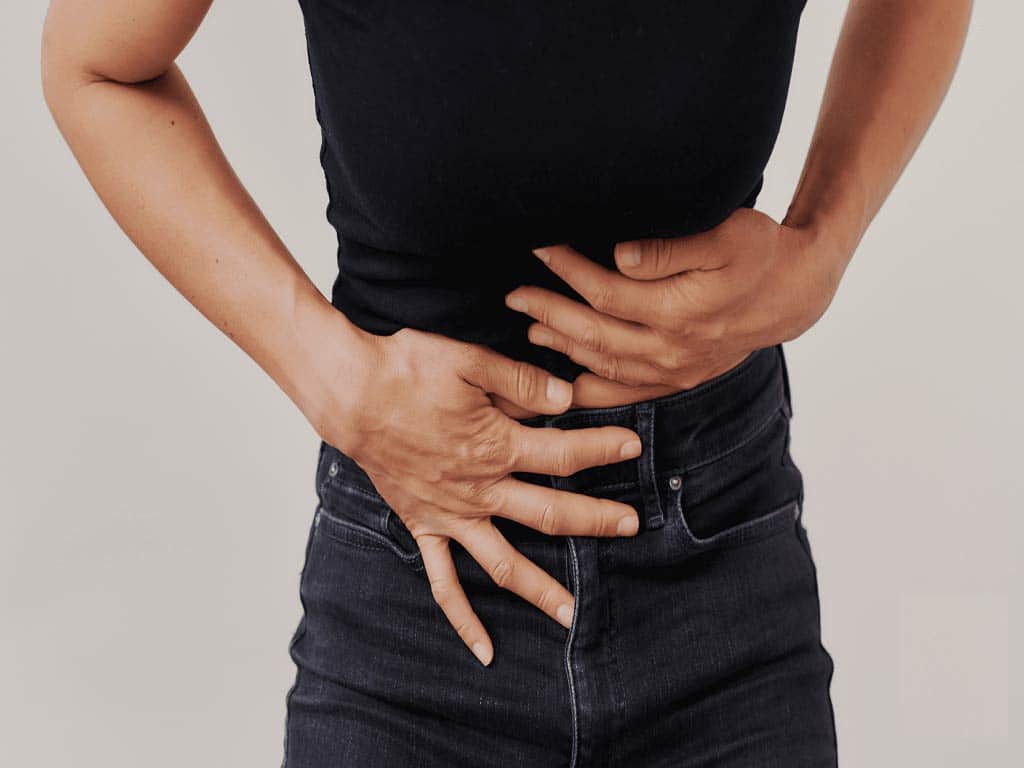
Transcutaneous Electrical Nerve Stimulation (TENS) offers drug-free pain relief. It is suitable for various types of conditions, including menstrual pain. A TENS unit for menstrual cramps works by delivering low-voltage electric current through the skin. This stimulates the sensory nerves to reduce pain sensations. Hence, it provides women with a natural alternative to medication. The device is safe to use with minimal risks of adverse side effects, making it efficient in pain management.
Period cramps occur when the uterine muscles contract during menstruation. This constricts the blood vessels in the area and causes pain. The intensity of the pain can vary from mild to severe, depending on the individual. A TENS machine can help manage varying pain levels through its adjustable settings. This article will cover how TENS can help relieve period pain, including its operation and frequency of use.
How a TENS Unit for Menstrual Cramps Works
A TENS unit for menstrual cramps consists of adhesive electrode pads that connect to a mini electrical generator. The machine sends electrical pulses through the pads that are attached to the skin. These pulses stimulate the sensory nerves in the area around them. As a result, it activates the natural pain mechanisms of the body.
TENS works in two ways: pain gating and endogenous opioid release. The first method is based on the Gate Control Theory of Pain. It suggests that certain nerves in the spinal cord act as gate controllers. During electrical stimulation, these “neural gates” close, blocking the transmission of pain signals to the brain.
The second method involves the production of endorphins. These are natural chemicals the body produces when it perceives pain. Endorphins bind to opioid receptors and inhibit the nerve cells from sending pain messages. Moreover, the gentle pulses of TENS machines create relaxation effects on the surrounding muscles. This helps reduce muscle tension and muscle spasms that contribute to menstrual pain.
Advantages of Using the Device Over Oral Medications
- A TENS machine can provide localised pain relief without the associated side effects of oral medicines.
- TENS can be used for a longer duration and do not require frequent dosing.
- A TENS machine is non-invasive and does not require ingestion. Therefore, it is a safer option for individuals with sensitivities or allergies to oral painkillers.
- The device is adjustable to deliver the desired strength of electrical impulses to an individual’s comfort level.
- A TENS machine can offer immediate pain relief upon application, whereas oral medications may take time to be absorbed.
- TENS allows for self-management, enabling individuals to have control over their pain relief.

How to Use a TENS Unit for Menstrual Cramps
Operating a TENS unit for menstrual cramps is easy with minimal instruction. To use the device, start by cleaning the treatment area. Wash the skin with mild soap and water and remove any oil, lotion, or dirt. Then, ensure the skin is completely dry before sticking the pads. After the electrode placement, turn on the machine and set the stimulation levels.
Start at the lowest intensity level and gradually increase to find the most comfortable sensation. Additionally, users can adjust the frequency and pulse width based on their desired treatment. They can operate it using a mobile application for wireless units. For example, a low-frequency TENS stimulation is ideal for prompting endorphin release. It is ideal for mild period pain and other types of chronic pain.
Meanwhile, high-frequency stimulation is suitable for more severe pain. Furthermore, set the treatment duration between 15 to 30 minutes. Individuals may use the TENS machine several times a day, provided they allocate at least 20-minute breaks between sessions. After use, turn off the device and remove the electrodes.
Proper Pad Placement
When setting up the electrodes, place them on the lower abdomen or where the cramps are most severe. Generally, position the pads on the sides of the pain. This will allow the electrical currents to flow directly towards the centre of the pain point. The placement is typically below the navel and above the pubic region.
Another placement of the TENS unit is at the lower back. Position the electrodes on either side of the spinal column. Therefore, it can help reduce cramping that extends to the lumbar region. However, avoid areas with broken skin, open wounds, or skin irritation.

How Often to Use a TENS Unit for Menstrual Cramps
A significant advantage of TENS machines is their ability to provide pain relief with minimal risks. Most individuals may use a TENS unit for menstrual cramps multiple times per day. Generally, it is recommended to use the device for two to three times a day. However, it is advisable to consult a healthcare professional for specific guidelines.
Using a TENS machine at the start of menstruation can help alleviate pain and discomfort. In some cases, TENS can help shorten the duration of the pain. Furthermore, it is safe to use the TENS device daily until the pain subsides. Daily usage does not pose long-term side effects or health complications.
For severe abdominal pain, women may set the treatment time up to one hour at a time. Then, they can continue the session after 20 minutes. Likewise, a TENS machine is beneficial for other chronic pain conditions like osteoarthritis and sciatica. They are recurring pain conditions that require long-term treatment. Thus, TENS is suitable for use as frequently as needed.
When to See a Doctor
TENS therapy is safe for most individuals. However, those with heart ailments, epilepsy, and implantable devices should avoid using a TENS machine. Individuals with these conditions should consult a doctor before starting electrical stimulation for pain management. Also, it is important to seek medical intervention if the pain persists after several treatment sessions.
It is vital for women to take note of their menstrual cycle patterns. Any changes in intensity, duration, and frequency of cramps may indicate an underlying condition. The common causes of severe abdominal or pelvic pain are endometriosis and irritable bowel syndrome. Therefore, getting a diagnosis can help find effective treatments.
Conclusion
TENS therapy is a safe and effective way to manage various types of pain. A TENS unit for menstrual cramps provides convenience due to its portability and ease of use. The device sends low-voltage electric currents to stimulate the sensory nerves to block pain signals. It also triggers the release of endogenous opioids like endorphins. Thus, it helps reduce the intensity of period cramps without the aid of medicines and avoid their related side effects.
Women can easily use the TENS device by following a few instructions. It starts with proper pad placement and then adjusting the settings. It is best to start with a low intensity and slowly increase to prevent discomfort. For optimal period pain relief, women may use the device several times a day. However, it is important to know when to consult a doctor. If the pain persists or worsens despite treatment, seeking medical intervention is a priority.







